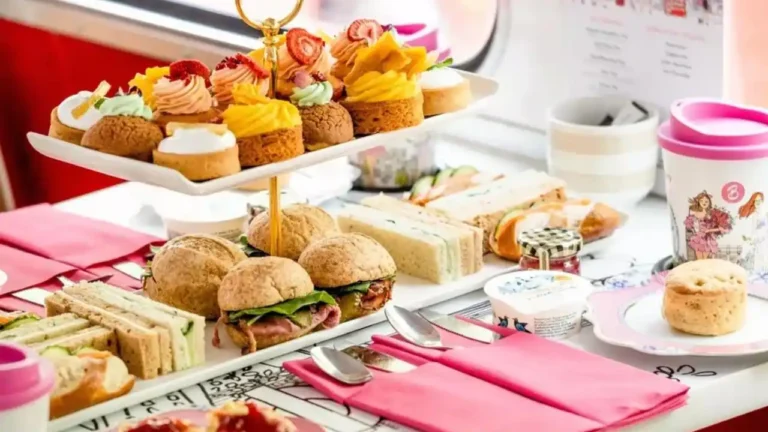Effective Home Marketing Strategies: Future Trends in Customer Loyalty for Real Estate
As much as the pandemic may have catapulted changes that would need digital remedies that weren’t complete anathemas to physical operations, the businesses that were unable to quickly adapt and succeed were, to paraphrase a common expression, the canaries in the coal mine for the business trends of the 21st century onwards.
It means that many retailers found themselves facing rapidly changing conditions of the lockdown period and many did not survive this ordeal. Even though, it came out that the overall picture of the industry proved to be very stable.
Still, many ‘players’ of this market managed to level even get some plus in the following years (despite, for instance, the never-ending labor and inflationary crises) because it was all about a proper understanding (and even, let alone the constant drive to adapt to) the shifts in the consumers’ preferences the pandemic itself has created.
Analyzing how some retail businesses successfully navigated one of the most challenging periods in the last century is crucial to determining where the path to opportunities in the digital age is for retails both lagging behind and preparing for their next move internal or with the assistance of a technology enablement partner like Ingenico.
It Is Always About The Customer When Identifying The Best Solutions
It was established earlier that the pandemic shifted the behavior of customers to various degrees. Customers rapidly became more demanding along four main vectors: these include loyalty, value, personalization as well as convenience. Now, for convenience let us turn our attention towards loyalty.
A great deal has been said and written about how new consumers are ‘no longer loyal’ and that there has been such a thing as ‘death of loyalty ‘especially in the retail and food service industries.
The issue, as I and many others have pointed out, is and always has been conceptions at the strategic level; the COVID crisis here therefore worked as a ‘tipping point’ on how businesses wanted to adapt their operational approach to gain loyalty.
Loyalty in the past meant for instance if a customer purchased a Ford product, he or she would always purchase Ford products. This is because people made their careers out of consumer ‘territory’ as it were, and in some cases, they would stay within it for the rest of their careers.
Today, loyalty must be seen as deserved, but it cannot be won by brand love only, for there are virtually uncountable brands (and the contemporary consumer is as irreducible and surrounded by the variety of options as ever before). The brands’ customers will remain loyal to those businesses that will offer value, convenience, and perhaps most importantly, integration across those channels.
It does not mean that consumers’ loyalty is defunct, it just means that it came with a new route – a new way of being. Still, for retailers, many of the changes it [pandemic] brought served industry-specific risks in most areas.
That is how retailers discovered that, while moving to improve their digital service channels, they had to create a data infrastructure that would capitalize on the opportunities opened up by the new data capture capabilities of their system: they had to determine the outlines of their strategic stance in order to influence that kind of digital transformations essential to staying relevant.
This led to the augmentation and introduction of various PoS modalities and innovations to fit in the new order social distancing model for consumers, with significantly higher levels of investment put into the app based structures.
In fact, a plethora of solutions appeared, including VIIA’s, as all the solutions focused on the objective requirements such as safety, convenience, accuracy, and personalization. For example, the use of the interactive kiosks enabled guests to order their meals in very limited physical contact with the staff during a labor crisis which is still prevalent to this day.
In others, AI and machine learning processes provide immediate and accurate response to customers’ inquiries or guarantee order configurations as soon as they are placed; to name just two of the technology applications that are set to upend much of the global economy.
However, as these innovations accumulated to address the difficulties that emerged through periods of the marches to lockdowns, the customer expectation also evolved quickly to rely more on the digital ordering that would capture the notion of a superior change or the permanent shift in the customer preference.
A clear example of a type of change that was sparked by the curbside requirement to change because of the pandemic was the use of QR codes and smartphone menus and the apps that were powering it all and the ‘deal economy’ that it initiated.
Indeed, one global survey revealed that currently, 78% of customers actively employ the retailer’s mobile app programs even though it was a rising tendency before the virus outbreak.
Moreover, that apps became more popular raised the bar in terms of what customers demanded from retailers in terms of loyalty programmes; thus, the retailers with well-developed loyalty initiatives stood to benefit from the pandemic the least.
Furthermore, mobile applications are more suitable to gradually enhance customer loyalty even more; according to one Forbes article, ‘’The loss and acquisition of customers are costly, therefore, retaining customers should be given priority’’, arguing that applications offer the ability to communicate more with consumers, give them individuality, turn shopping into a game and tell compelling stories that will make people buy more.
The above Forbes report using data from McKinsey shows that “customers who are members of loyalty programs are 59% more likely to choose a brand rather than competing one and 43% more likely to make a weekly purchase… and consumers that are members of a loyalty program are likely to spend more with the brand. ”
Moreover, Yotpo global research showed that 68% of the people that were surveyed said yes, they would participate in a loyalty program if available and again, they were willing to spend more with a certain brands due to an appealing loyalty program.
Additionally, loyalty programs are important stops for collecting first-party data, another Forbes report argues: “While third-party cookies are on their way to becoming irrelevant, brands need to adjust to shifts in user behavior and compliance with data protection laws simultaneously, businesses consider being able to establish brand associations important. ”
Which is to say, it is not quite enigmatic if the investment into customer loyalty is ‘profitable’, ‘advantageous’, or ‘beneficial’ for the retailers. I mean, customer loyalty programs have indeed become an obvious investment; however, implementing them appropriately is a problem that seems to be realized by so many organizations.
In addition, many retailers that did not establish their loyalty programs yet or have inefficient ones still have a high demand pressure to develop a proper program or enhance their existing one and make all the necessary changes to adapt for further retail competition.
That leads us to another key change that has proven longer-term: the orientation towards the consumer convenience; the so called frictionless shopping relates to the consumer needs for convenience, for the time value ratio, and for the freedom of choice as for the preferred way to check out.
So to meet this need of loyalty at a time where customer experience has completely shifted toward speedy without compromise, it is time to make sure not only is this PoS system capable – you’re also providing a better experience.
Why the Client Journey Needs to Be Smooth and Seamless to Get Customers to Stick
According to Deloitte and The Wall Street Journal, cited in one of the reports, in order to get the most out of customer loyalty programs, restaurants should expand their focus on the ‘earn and burn of the loyalty points model’ to include a sense of ‘emotional connection’ with the clients. ”
With smoothness in mind, one can hardly understand what role frictionless retail models play in providing more opportunities for development of positive emotional connections with the customers compared to, for example, great or excellent customer service, fabulous store fronts and so on.
.
However, it’s best to remember what creates loyalty at a core level for most consumers: the emotion that they not just had a pleasant time or received something they wanted and still more, they received it right, fast, and more importantly, it improved their quality of life.
Companies in the long run aim to communicate dependability and trust and this can be achieved ahead of time by integrating new advanced friendly PoS.
Therefore, touchless payments in-store, mobile, and via Self-Checkout Kiosks/Tablets are a means of making customers’ lives better in a disruptive world while in the store environment to grow their loyalty.
Indeed, if a customer is frustrated when checking out, then he or she leaves the business with frustration and that is not good for the business.
And, while yes, many retailers already do offer their own loyalty programs, very many are old and unsatisfactory or simply not ideal, still relying on such ineffective approaches as the expiration of bonus points.
Citing a report by McKinsey, “macro-economic factors are the driver to put pressures on businesses’ bottom line, all of which requires value creation through customer loyalty,” and integrated and advanced checkout solutions are part of the solution.
One such piece from that puzzle is Ingenico’s AXIUM solution, an Android-based point of sale system, equipped with a broad portfolio of applications, global API connectivity, estate management, and security features.
Such solutions can also make it possible to offer the kind of technological support through PoS for the digital services that the QSRs require to enhance loyalty program operations and performance, as well as deliver the client and customer-oriented integrated service modality that is necessary for success.
And, that I believe, is what it means to have perfectly smooth, seamless ‘frictionless commerce’.
In short, it can be stated that digital loyalty programs are crucial to competitive retailers nowadays.
The initial economic effects of COVID-19 are layered on top of pre-existing woes after the housing crisis of 2008; while customers are currently being pinched as much as they have been in the modern memory of the economy.
As such, every business leader must remind oneself that in essence, loyalty programs and more so, competitive business strategy has to persist in adding value to customers in an environment which is constrained on cash while inflation remains a rife trend.
The only thing left when customers have less and businesses have thinner margins is efficiency and becoming is the ever-evolving answer to a question that while has no end in sight yet is not a riddle.
The opportunities are there. VIVIPINS research initiative, 96 percent of millennials “believe that companies must look for innovative ways to reward loyal customers,” while 81 percent supported the idea that “membership makes them spend more; they would be willing to switch to another company offering a better loyalty program. ”
Those retailers who would like to attract younger consumers (which isn’t everybody but still practically any retailer) and more frugal, value-conscious consumers at the same time, have their ways of doing it by adjusting their loyalty programs and the last of which is ‘seamlessness’.
However, for retailers who want to continue contending for shoppers’ disposable income it will be cried on high that customer experience is still the pivot after all: it gets back to making the cut and customers feel good about their visit, it is now more about making a connection and loyalty programs are on the precipice of those relationships.
Young consumers will patronize you again if they feel good about shopping with you, period but the same is true for any segment but young consumers are the future of your business.
Even this may appear like a colossal job, and it is from here that retailers ought to feel that there is capability, which will allow them to harness the next generation of loyal consumers to the maximum.







